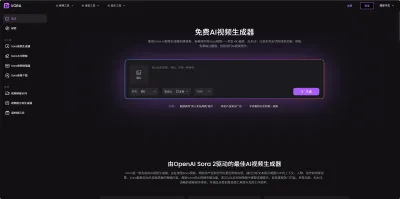WaveFunctionCollapse
This program generates bitmaps that are locally similar to the input bitmap.
<p align="center"><img alt="main collage" src="images/wfc.png"></p> <p align="center"><img alt="main gif" src="images/wfc.gif"></p>Local similarity means that
- (C1) The output should contain only those NxN patterns of pixels that are present in the input.
- (Weak C2) Distribution of NxN patterns in the input should be similar to the distribution of NxN patterns over a sufficiently large number of outputs. In other words, probability to meet a particular pattern in the output should be close to the density of such patterns in the input.
In the examples a typical value of N is 3.
<p align="center"><img alt="local similarity" src="images/patterns.png"></p>WFC initializes output bitmap in a completely unobserved state, where each pixel value is in superposition of colors of the input bitmap (so if the input was black & white then the unobserved states are shown in different shades of grey). The coefficients in these superpositions are real numbers, not complex numbers, so it doesn't do the actual quantum mechanics, but it was inspired by QM. Then the program goes into the observation-propagation cycle:
- On each observation step an NxN region is chosen among the unobserved which has the lowest Shannon entropy. This region's state then collapses into a definite state according to its coefficients and the distribution of NxN patterns in the input.
- On each propagation step new information gained from the collapse on the previous step propagates through the output.
On each step the number of non-zero coefficients decreases and in the end we have a completely observed state, the wave function has collapsed.
It may happen that during propagation all the coefficients for a certain pixel become zero. That means that the algorithm has run into a contradiction and can not continue. The problem of determining whether a certain bitmap allows other nontrivial bitmaps satisfying condition (C1) is NP-hard, so it's impossible to create a fast solution that always finishes. In practice, however, the algorithm runs into contradictions surprisingly rarely.
Wave Function Collapse algorithm has been implemented in C++, Python, Kotlin, Rust, Julia, Go, Haxe, Java, Clojure, Free Pascal, p5js, JavaScript and adapted to Unity, Unreal Engine 5 and Houdini. You can build WFC from source, download an official release for Windows, download an interactive graphical version from itch.io or run it in the browser. WFC generates levels in Bad North, Caves of Qud, Dead Static Drive, Townscaper, Matrix Awakens, several smaller games and many prototypes. It led to new research. For more related work, explanations, interactive demos, guides, tutorials and examples see the ports, forks and spinoffs section.
Watch a video demonstration of WFC algorithm on YouTube: https://youtu.be/DOQTr2Xmlz0
Algorithm
- Read the input bitmap and count NxN patterns.
- (optional) Augment pattern data with rotations and reflections.
- Create an array with the dimensions of the output (called "wave" in the source). Each element of this array represents a state of an NxN region in the output. A state of an NxN region is a superposition of NxN patterns of the input with boolean coefficients (so a state of a pixel in the output is a superposition of input colors with real coefficients). False coefficient means that the corresponding pattern is forbidden, true coefficient means that the corresponding pattern is not yet forbidden.
- Initialize the wave in the completely unobserved state, i.e. with all the boolean coefficients being true.
- Repeat the following steps:
- Observation:
- Find a wave element with the minimal nonzero entropy. If there is no such elements (if all elements have zero or undefined entropy) then break the cycle (4) and go to step (5).
- Collapse this element into a definite state according to its coefficients and the distribution of NxN patterns in the input.
- Propagation: propagate information gained on the previous observation step.
- Observation:
- By now all the wave elements are either in a completely observed state (all the coefficients except one being zero) or in the contradictory state (all the coefficients being zero). In the first case return the output. In the second case finish the work without returning anything.
Tilemap generation
The simplest nontrivial case of the algorithm is when NxN=1x2 (well, NxM). If we simplify it even further by storing not the probabilities of pairs of colors but the probabilities of colors themselves, we get what we call a "simple tiled model". The propagation phase in this model is just adjacency constraint propagation. It's convenient to initialize the simple tiled model with a list of tiles and their adjacency data (adjacency data can be viewed as a large set of very small samples) rather than a sample bitmap.
<p align="center"><a href="http://i.imgur.com/jIctSoT.gifv"><img src="images/tile.gif"/></a></p> <!--<p align="center"> <a href="images/tile.gif">GIF</a> | <a href="http://i.imgur.com/jIctSoT.gifv">GIFV</a> </p>-->Lists of all the possible pairs of adjacent tiles in practical tilesets can be quite long, so I implemented a symmetry system for tiles to shorten the enumeration. In this system each tile should be assigned with its symmetry type.
<p align="center"><img alt="symmetries" src="images/symmetry-system.png"></p>Note that the tiles have the same symmetry type as their assigned letters (or, in other words, actions of the dihedral group D4 are isomorphic for tiles and their corresponding letters). With this system it's enough to enumerate pairs of adjacent tiles only up to symmetry, which makes lists of adjacencies for tilesets with many symmetrical tiles (even the summer tileset, despite drawings not being symmetrical the system considers such tiles to be symmetrical) several times shorter.
<p align="center"> <img alt="knots" src="images/knots.png"> <img alt="tiled rooms" src="images/rooms.png"> <img alt="circuit 1" src="images/circuit-1.png"> <img alt="circuit 2" src="images/circuit-2.png"> <img alt="circles" src="images/circles.png"> <img alt="castle" src="images/castle.png"> <img alt="summer 1" src="images/summer-1.png"> <img alt="summer 2" src="images/summer-2.png"> </p>Note that the unrestrained knot tileset (with all 5 tiles being allowed) is not interesting for WFC, because you can't run into a situation where you can't place a tile. We call tilesets with this property "easy". Without special heuristics easy tilesets don't produce interesting global arrangements, because correlations of tiles in easy tilesets quickly fall off with a distance. Many easy tilesets can be found on Guy Walker's website. Consider the "Dual" 2-edge tileset there. How can it generate knots (without t-junctions, not easy) while being easy? The answer is, it can only generate a narrow class of knots, it can't produce an arbitrary knot.
Note also that Circuit, Summer and Rooms tilesets are non-Wang. That is, their adjacency data cannot be induced from edge labels. For example, in Circuit two Corners cannot be adjacent, yet they can be connected with a Connection tile, and diagonal tracks cannot change direction.
Higher dimensions
WFC algorithm in higher dimensions works completely the same way as in dimension 2, though performance becomes an issue. These voxel models were generated with N=2 overlapping tiled model using 5x5x5 and 5x5x2 blocks and additional heuristics (height, density, curvature, ...).
<p align="center"><img alt="voxels" src="images/castles-3d.png"></p>Higher resolution screenshots: 1, 2, 3.
MarkovJunior repository contains an implementation of the 3d simple tiled model with many tilesets and examples.
Constrained synthesis
WFC algorithm supports constraints. Therefore, it can be easily combined with other generative algorithms or with manual creation.
Here is WFC autocompleting a level started by a human:
<p align="center"><a href="http://i.imgur.com/X3aNDUv.gifv"><img src="images/constrained.gif"/></a></p> <!--<p align="center"> <a href="images/constrained.gif">GIF</a> | <a href="http://i.imgur.com/X3aNDUv.gifv">GIFV</a> </p>-->ConvChain algorithm satisfies the strong version of the condition (C2): the limit distribution of NxN patterns in the outputs it is producing is exactly the same as the distributions of patterns in the input. However, ConvChain doesn't satisfy (C1): it often produces noticeable defects. It makes sense to run ConvChain first to get a well-sampled configuration and then run WFC to correct local defects. This is similar to a common strategy in optimization: first run a Monte-Carlo method to find a point close to a global optimum and then run a gradient descent from that point for greater accuracy.
P. F. Harrison's texture synthesis algorithm is significantly faster than WFC, but it has trouble with long correlations (for example, it's difficult for this algorithm to synthesize brick wall textures with correctly aligned bricks). But this is exactly where WFC shines, and Harrison's algorithm supports constraints. It makes sense first to generate a perfect brick wall blueprint with WFC and then run a constrained texture synthesis algorithm on that blueprint.
Comments
Why the minimal entropy heuristic? I noticed that when humans draw something they often follow the minimal entropy heuristic themselves. That's why the algorithm is so enjoyable to watch.
The overlapping model relates to the simple tiled model the same way higher order Markov chains relate to order one Markov chains.
WFC's propagation phase is very similar to the loopy belief propagation algorithm. In fact, I first programmed belief propagation, but then switched to constraint propagation with a saved stationary distribution, because BP is significantly slower without a massive parallelization (on a CPU) and didn't produce significantly better results in my problems.
Note that the "Simple Knot" and "Trick Knot" samples have 3 colors, not 2.
One of the dimensions can be time. In particular, d-dimensional WFC captures the behaviour of any (d-1)-dimensional cellular automata.
Used work
- Alexei A. Efros and Thomas K. Leung, Texture Synthesis by Non-parametric Sampling, 1999. WaveFunctionCollapse is a texture synthesis algorithm. Compared to the earlier texture synthesis algorithms, WFC guarantees that the output contains only those NxN patterns that are present in the input. This makes WFC perfect for level generation in games and pixel art, and less suited for large full-color textures.
- Paul C. Merrell, Model Synthesis, 2009. Merrell derives adjacency constraints between tiles from an example model and generates a new larger model with the AC-3 algorithm. We generalize his approach to work with NxN overlapping patterns of tiles instead of individual tiles. This allows to use a single image as the input to the algorithm. By varying N, we can make the output look more like the input or less. We introduce the lowest entropy heuristic that removes the directional bias in generated results, is defined for irregular grids and is better suited for pre-constrained problems. We implement a tile symmetry system to reduce the sizes of inputs. We visualize partially observed states, either with color averaging or per-voxel voting. Merrell also introduced a method of incrementally modifying the model in parts to reduce the failure rate (which we don't use here). Recently the author created a page for model synthesis and published code.
- Alan K. Mackworth, Consistency in Networks of Relations, 1977. WFC translates a texture synthesis problem into a constraint satisfaction problem. Currently it uses the AC-4 algorithm by Roger Mohr and Thomas C. Henderson, 1986.
- Paul F. Harrison, Image Texture Tools, 2005. WFC was also influenced by the declarative texture synthesis chapter of Paul Harrison's dissertation. The author defines adjacency data of tiles by labeling their borders and uses backtracking search to fill the tilemap. A demonstration of the algorithm is available on the web.
How to build
WFC is a console application that depends only on the standard library. Get .NET Core for Windows, Linux or macOS and run
dotnet run --configuration Release WaveFunctionCollapse.csproj
Generated results are saved into the output folder. Edit samples.xml to change model parameters.
Alternatively, use build instructions from the community for various platforms from the relevant issue. Casey Marshall made a pull request that makes using the program with the command line more convenient and includes snap packaging.
Notable ports, forks and spinoffs
- Emil Ernerfeldt made a C++ port.
- Max Aller made a Kotlin (JVM) library, Kollapse. Joseph Roskopf made a line by line Kotlin port of the optimized 2018 version. Edwin Jakobs made a Kotlin library that supports 3d examples.
- [Kevin
编辑推荐精选


Vora
免费创建高清无水印Sora视频
Vora是一个免费创建高清无水印Sora视频的AI工具


Refly.AI
最适合小白的AI自动化工作流平台
无需编码,轻松生成可复用、可变现的AI自动化工作流


酷表ChatExcel
大模型驱动的Excel数据处理工具
基于大模型交互的表格处理系统,允许用户通过对话方式完成数据整理和可视化分析。系统采用机器学习算法解析用户指令,自动执行排序、公式计算和数据透视等操作,支持多种文件格式导入导出。数据处理响应速度保持在0.8秒以内,支持超过100万行数据的即时分析。


TRAE编程
AI辅助编程,代码自动修复
Trae是一种自适应的集成开发环境(IDE),通过自动化和多元协作改变开发流程。利用Trae,团队能够更快速、精确地编写和部署代码,从而提高编程效率和项目交付速度。Trae具备上下文感知和代码自动完成功能,是提升开发效率的理想工具。


AIWritePaper论文写作
AI论文写作指导平台
AIWritePaper论文写作是一站式AI论文写作辅助工具,简化了选题、文献检索至论文撰写的整个过程。通过简单设定,平台可快速生成高质量论文大纲和全文,配合图表、参考文献等一应俱全,同时提供开题报告和答辩PPT等增值服务,保障数据安全,有效提升写作效率和论文质量。


博思AIPPT
AI一键生成PPT,就用博思AIPPT!
博思AIPPT,新一代的AI生成PPT平台,支持智能生成PPT、AI美化PPT、文本&链接生成PPT、导入Word/PDF/Markdown文档生成PPT等,内置海量精美PPT模板,涵盖商务、教育、科技等不同风格,同时针对每个页面提供多种版式,一键自适应切换,完美适配各种办公场景。


潮际好麦
AI赋能电商视觉革命,一站式智能商拍平台
潮际好麦深耕服装行业,是国内AI试衣效果最好的软件。使用先进AIGC能力为电商卖家批量提供优质的、低成本的商拍图。合作品牌有Shein、Lazada、安踏、百丽等65个国内外头部品牌,以及国内10万+淘宝、天猫、京东等主流平台的品牌商家,为卖家节省将近85%的出图成本,提升约3倍出图效率,让品牌能够快速上架。


iTerms
企业专属的AI法律顾问
iTerms是法大大集团旗下法律子品牌,基于最先进的大语言模型(LLM)、专业的法律知识库和强大的智能体架构,帮助企业扫清合规障碍,筑牢风控防线,成为您企业专属的AI法律顾问。


SimilarWeb流量提升
稳定高效的流量提升解决方案,助力品牌曝光
稳定高效的流量提升解决方案,助力品牌曝光


Sora2视频免费生成
最新版Sora2模型免费使用,一键生成无水印视频
最新版Sora2模型免费使用,一键生成无水印视频
推荐工具精选
AI云服务特惠
懂AI专属折扣关注微信公众号
最新AI工具、AI资讯
独家AI资源、AI项目落地

微信扫一扫关注公众号






